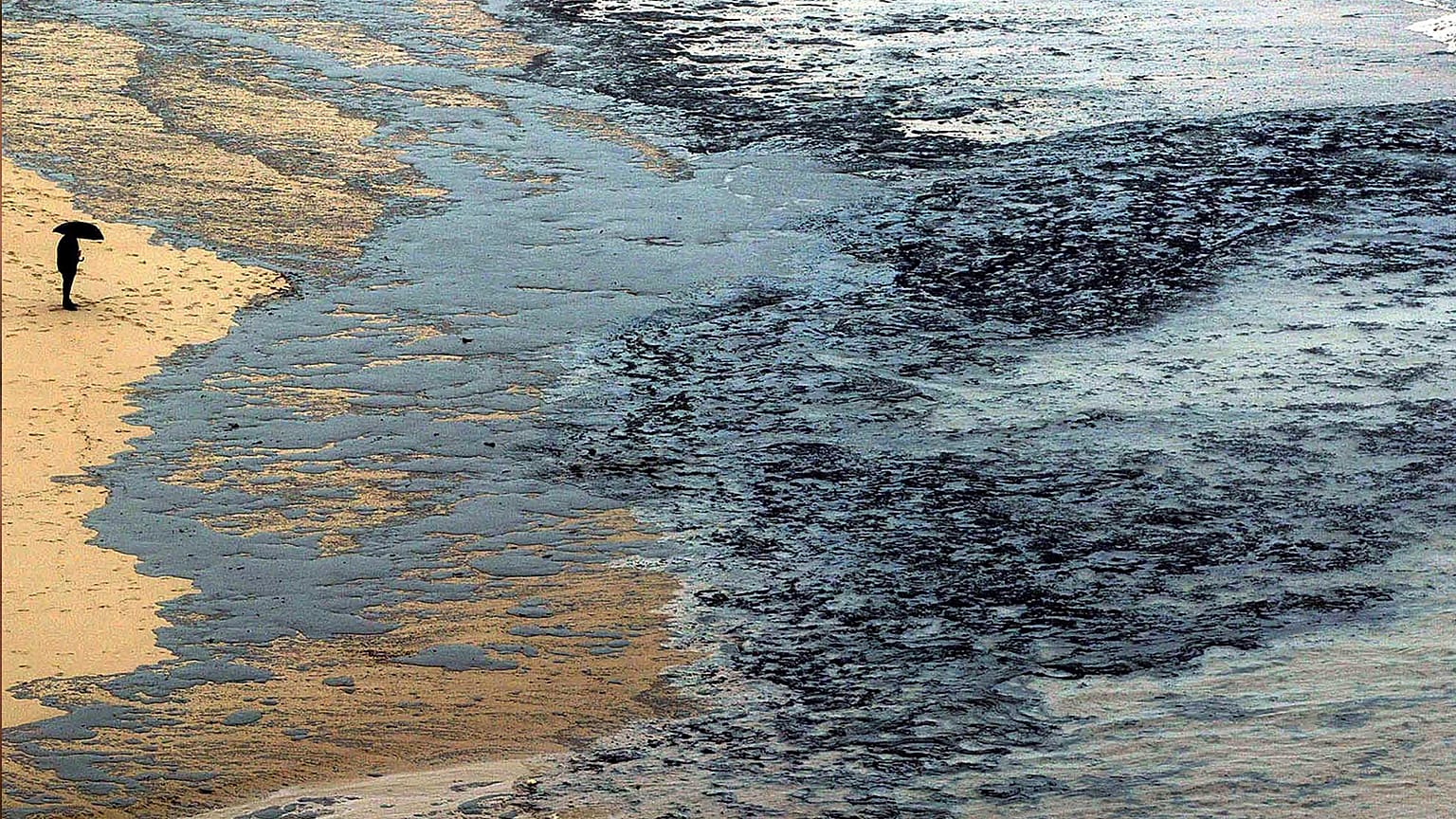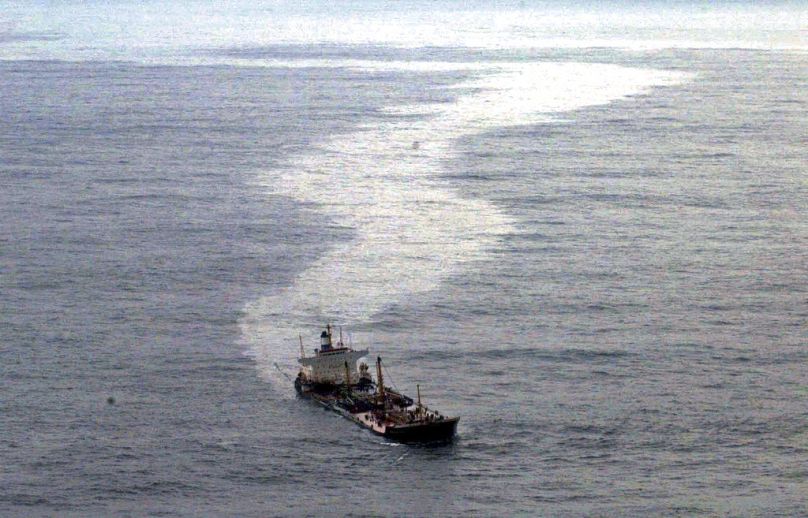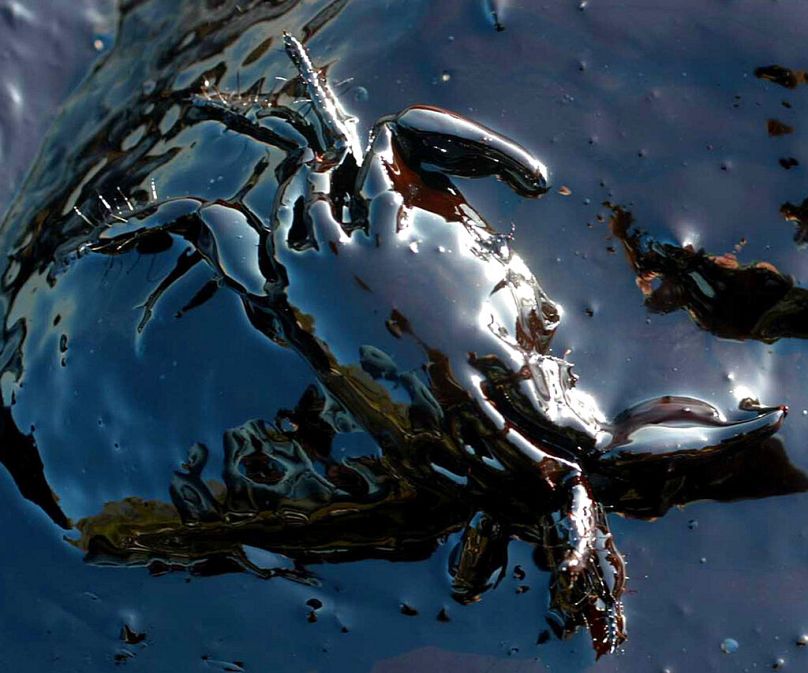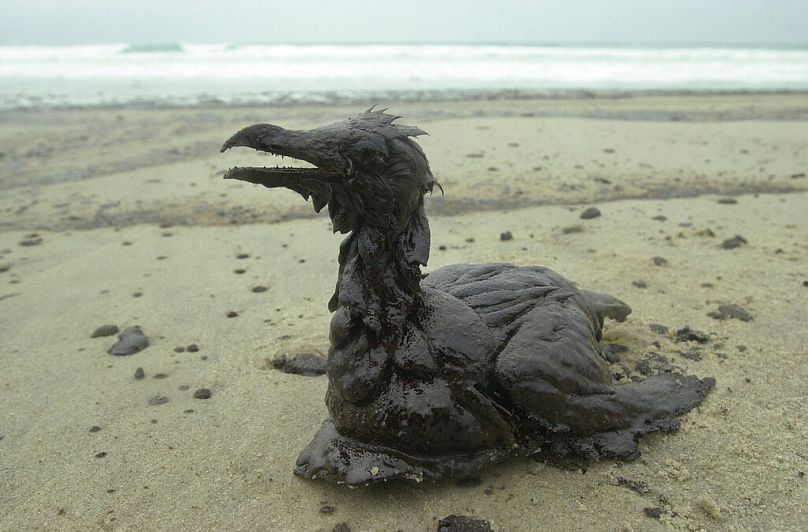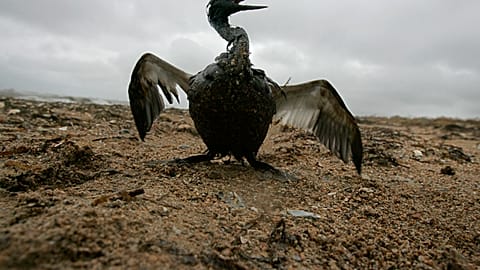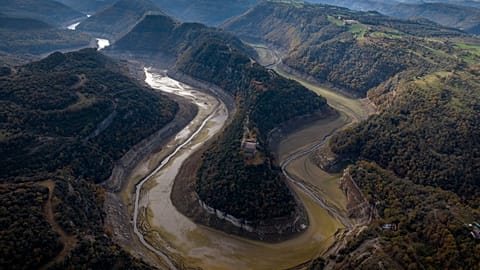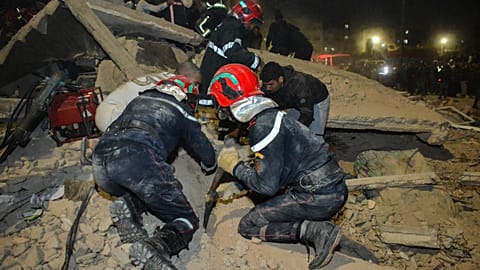Spain's biggest environmental disaster: The Prestige oil spill 20 years later
Never before had 63,000 tonnes of heavy fuel oil washed up on Iberian coasts, creating a 2,000 kilometres-long polluted area stretching from Portugal to Spain and all the way to France.
After he finished his workday on 13 November 2002, Javier Sar, a sailor for 20 years in the Spanish region of Galicia, was in a bar with his colleagues.
They had heard the news on the radio while fishing that day. One of the boats in the Finisterre corridor was having problems. Nothing too uncommon.
No one could have foreseen that this seemingly manageable event would become the worst ecological disaster in the history of Spain.
Never before had 63,000 tonnes of heavy fuel oil flushed the coasts of the north of the Iberian country -- ending up creating 2,000 kilometres of a polluted area stretching from Portugal to Spain and France.
Twenty years ago, however, on the evening of 13 November, everything was calm.
Situation quickly turns chaotic
It was in the early hours of the morning -- just two hours into his shift -- when a frightened colleague woke Javier up. The smell of diesel was overwhelming.
Thinking it was a leak from their own ship, the two sailors went down to the engine room, but as they walked through the corridors, they realised that the smell was no longer so strong.
It was not coming from their ship, it was coming from the sea.
"We didn't know anything about what was going on. I couldn't imagine that it was the tanker that was 27 (nautical) miles out a few hours ago and was in trouble, but we started to connect the dots," Sar told Euronews.
"We heard the tugboats talking on a radio channel, and then we realised. The ship was practically on the coast of Muxia."
That tanker was the Prestige. The 243-metre-long ship was out of control with 27 crew members on board. The heavy storm had caused a leak, which heeled the ship at 45 degrees and the oil it was carrying began to leak into the sea.
Soon after, Sar received a call from the Galician regional fisheries minister -- the local authorities were concerned.
What's the situation," he asked.
"Chaotic. The boat (is sinking) off the coast and we're only about to see what will happen," Sar told him.
'A pitch-black future'
The Prestige was a 26-year-old, single-hulled vessel that had just received its navigation certificate from the US classifier ABS after a repair in China.
Experts who studied the case said the ship suffered from hull failure in the same section where it was repaired.
After rescuing most of the crew on board -- the captain and a couple of other sailors remained inside the ship to help tow it in -- the authorities decided to move it away from the coast, and with the help of tugboats, took it out to sea.
"It was a catastrophe that could have been reduced to a few kilometres of coastline, but moving the ship away caused almost 2,000 kilometres of pollution, making it a continent-wide catastrophe," Greenpeace spokesman Manoel Santos said.
The decision was taken by the minister of public works at the time, Francisco Álvarez Cascos, who ordered the ship to be towed away from the coast towards the north, which worried the French and British authorities.
The crisis cabinet had been in meetings since 14 November, and several options were put on the table.
The cabinet even considered the possibility of bombing the tanker with fighter jets before it sank, according to Defence Minister Federico Trillo.
"No one among the people who work at sea in Galicia supported moving the ship away. This was maximising the catastrophe", Santos pointed out, speaking of the errors in the management of the crisis.
"There was a lot of false information from politicians, even denying the existence of an oil slick when people saw it entering their coasts and beaches," he adds. "It was a terrifying cocktail."
Until the Prestige finally sank six days later, on 19 November.
"The future was pitch-back, that's the best way to put it. I was building a boat and, after that, we even considered stopping production," Sar said.
'Anger and helplessness'
The ocean current favoured the heavy fuel oil's path towards land. At the time, the oil spill covered 170 kilometres of coastline, and in the following days, it continued to spread.
Despite the bad weather, thousands of volunteers and army personnel came to Galicia to help clean up the beaches.
"The image I have in my mind from those days is of the volunteers working their hearts off, cleaning the beaches. And the desolation you had when, more or less, after a few days, you had a clean beach and, the next day, you arrived and the beach was the same as at the beginning," said Sar.
"You'd come back again with that anger and impotence," he said.
The clean-up was chaotic, and the volunteers did not even have protective gear.
"There was absolutely nothing. The first time the (Spanish) king came to Muxia, we told him that we had absolutely nothing, not even protective material. The next day, a lorry appeared in the port area, and they took it to Civil Protection with gloves, covers and masks", said Sar.
From sunrise to sunset, they collected more than 100,000 tonnes of the black, tarry goo. The days were hard and intense.
"When there was a sunny day, (the oil) became more volatile and you would see the volunteers getting dizzy and fainting. It was shocking," he added.
The Prestige trial
The spill affected nearly 3,000 kilometres of polluted coastline, but the trial, which took place ten years after the spill, only put some of the guilty parties in the dock, according to Santos.
"The trial was the biggest environmental trial in the history of Spain. It was a mega-trial. Its investigation lasted nine years. And after eleven years, no one was found guilty. In fact, many people did not appear," Santos, the Greenpeace spokesperson, said.
"There was a sentence in 2013 by the regional High Court (of Galicia), but it did not even convict anyone for environmental crime."
"It only condemned the ship's captain for grave disobedience to the Spanish authorities in the rescue operations," said Margarita Trejo, an expert in environmental law.
"It has taken 16 years, until 2008, to get a sentence of two years in prison for an environmental and ecological crime against the captain of the ship."
"It has also taken 16 years to obtain compensation and reparations for both the Spanish state and the Junta de Galicia, as well as for the others affected," Trejo said.
The total sum that the Spanish state is seeking in reparations is $1 billion (approx. €1bn).
A UK court is yet to determine whether the British insurer of the Prestige -- which has been declared liable by proxy for the ecological tragedy -- has to compensate the victims.














